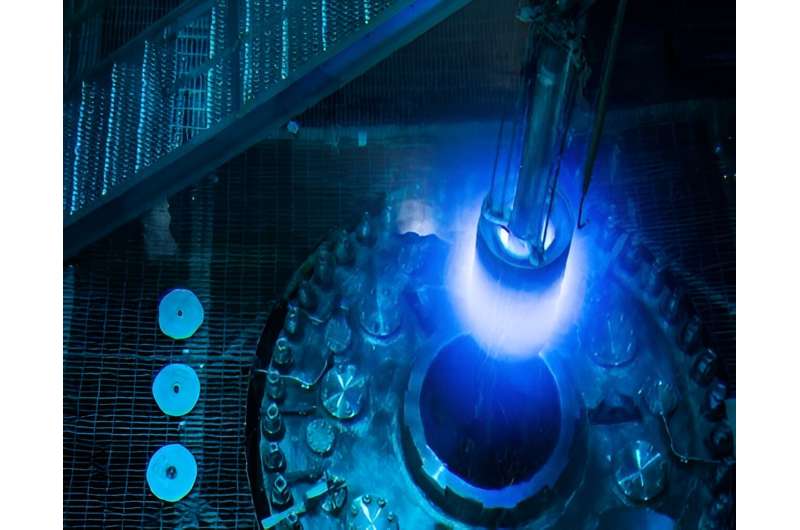This article has been reviewed according to Science X's editorial process and policies. Editors have highlighted the following attributes while ensuring the content's credibility:
fact-checked
peer-reviewed publication
trusted source
proofread
Research characterizes the footprint of neutrinos

The neutrino, one of nature's most elusive and least understood subatomic particles, rarely interacts with matter. That makes precision studies of the neutrino and its antimatter partner, the antineutrino, a challenge. The strongest emitters of neutrinos on Earth—nuclear reactors—play a key role in studying these particles. Researchers have designed the Precision Reactor Oscillation and Spectrum Experiment (PROSPECT) for detailed studies of electron antineutrinos coming from the core of the High Flux Isotope Reactor (HFIR).
Now the PROSPECT research collaboration has reported the most precise measurement ever of the energy spectrum of antineutrinos emitted from the fission of uranium-235 (U-235). These results provide scientists with new information about the nature of these particles.
PROSPECT's collaborators represent more than 60 participants from 13 universities and four national laboratories. They built a novel antineutrino detector system and installed it with extensive, tailored shielding against background at the HFIR research reactor, a Department of Energy (DOE) Office of Science user facility at Oak Ridge National Laboratory. The research focuses on antineutrinos emerging from the fission of U-235. Produced by nuclear beta decay, antineutrinos are antimatter-particle counterparts to neutrinos.
PROSPECT provided insight into fundamental neutrino physics and is a powerful tool for better understanding nuclear processes in fission reactors. PROSPECT has now reported the most precise measurement of the antineutrino energy spectrum from U-235. Moreover, it provides new constraints on the origin of the observed data-model mismatch. These results have made evident the need for better models describing the production of antineutrinos from fissile isotopes. The findings are published in the journal Physical Review Letters.
Scientists are interested in the properties of the neutrino because they provide a direct test of the Standard Model of particle physics. This is the theory describing the interactions between all the fundamental particles in the universe. Suggestions for physics that are not explained by the Standard Model have originated from disagreements between predictions based on the model and data from experiments. These reactor-based experiments have detected fewer neutrinos than expected and found inconsistencies in a small region of the energy spectrum.
The new result from the PROSPECT Collaboration directly addresses these inconsistencies. The result does so by providing a new reference energy spectrum. It also provides new constraints on the origin of the disagreements between data and models.
Experiments based at nuclear reactors have achieved important milestones in neutrino physics, such as the first experimental detection of the particle and the confirmation that neutrinos change between types as they travel. Unique features like high intensity and a compact core of highly enriched U-235 fuel make HFIR an ideal location to continue this long association between reactors and new insight into neutrino properties.
More information: M. Andriamirado et al, Final Measurement of the U235 Antineutrino Energy Spectrum with the PROSPECT-I Detector at HFIR, Physical Review Letters (2023). DOI: 10.1103/PhysRevLett.131.021802
Journal information: Physical Review Letters
Provided by US Department of Energy





















